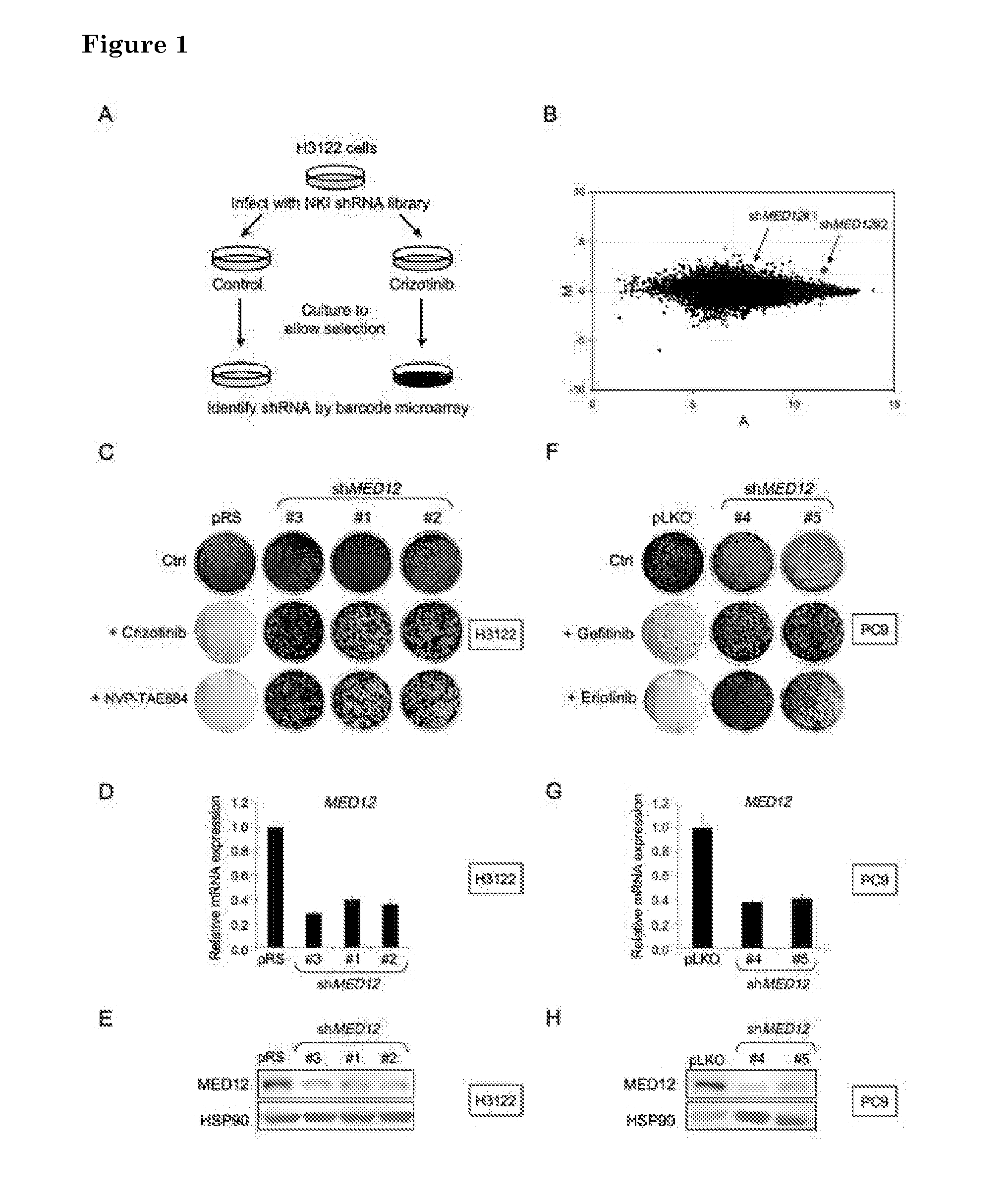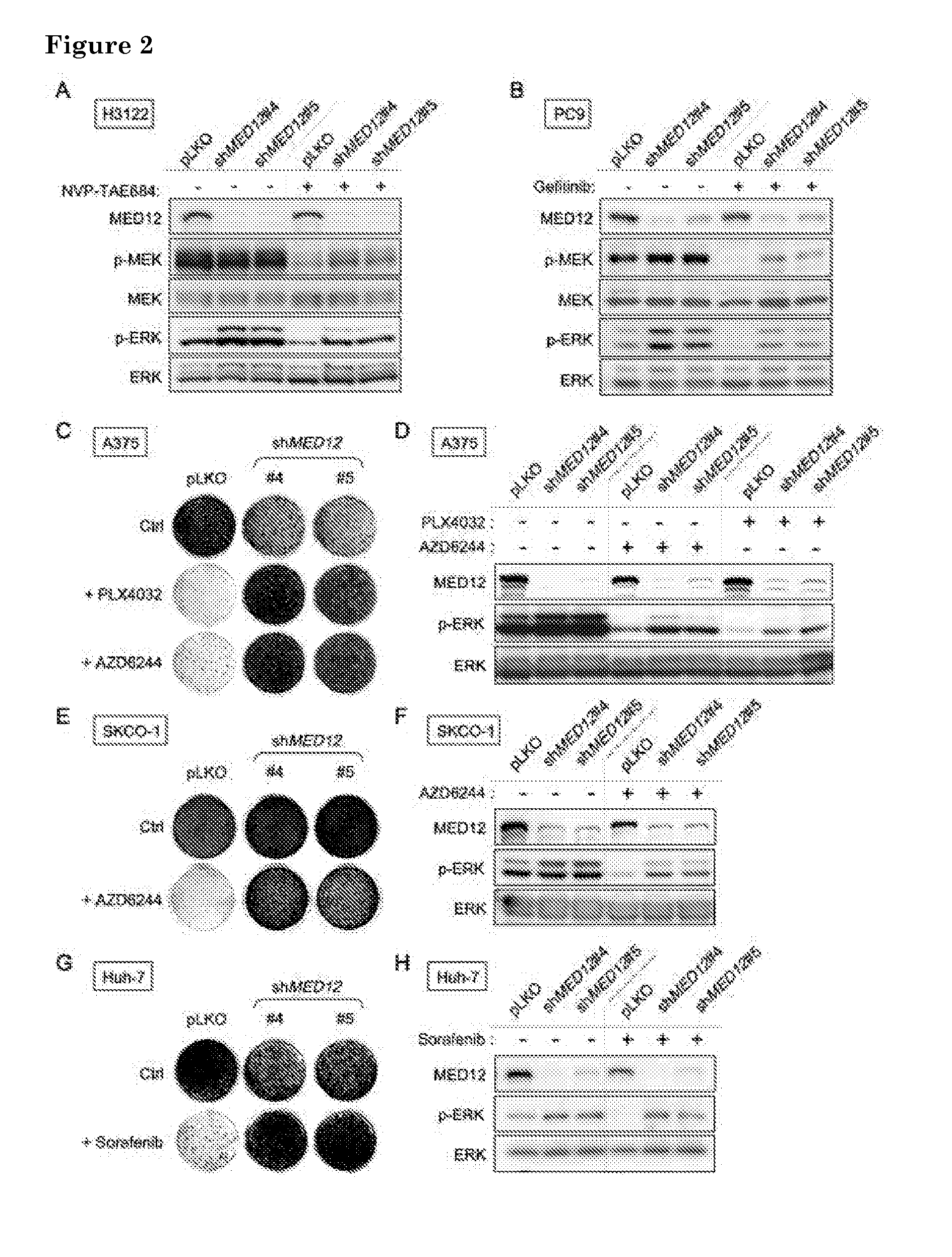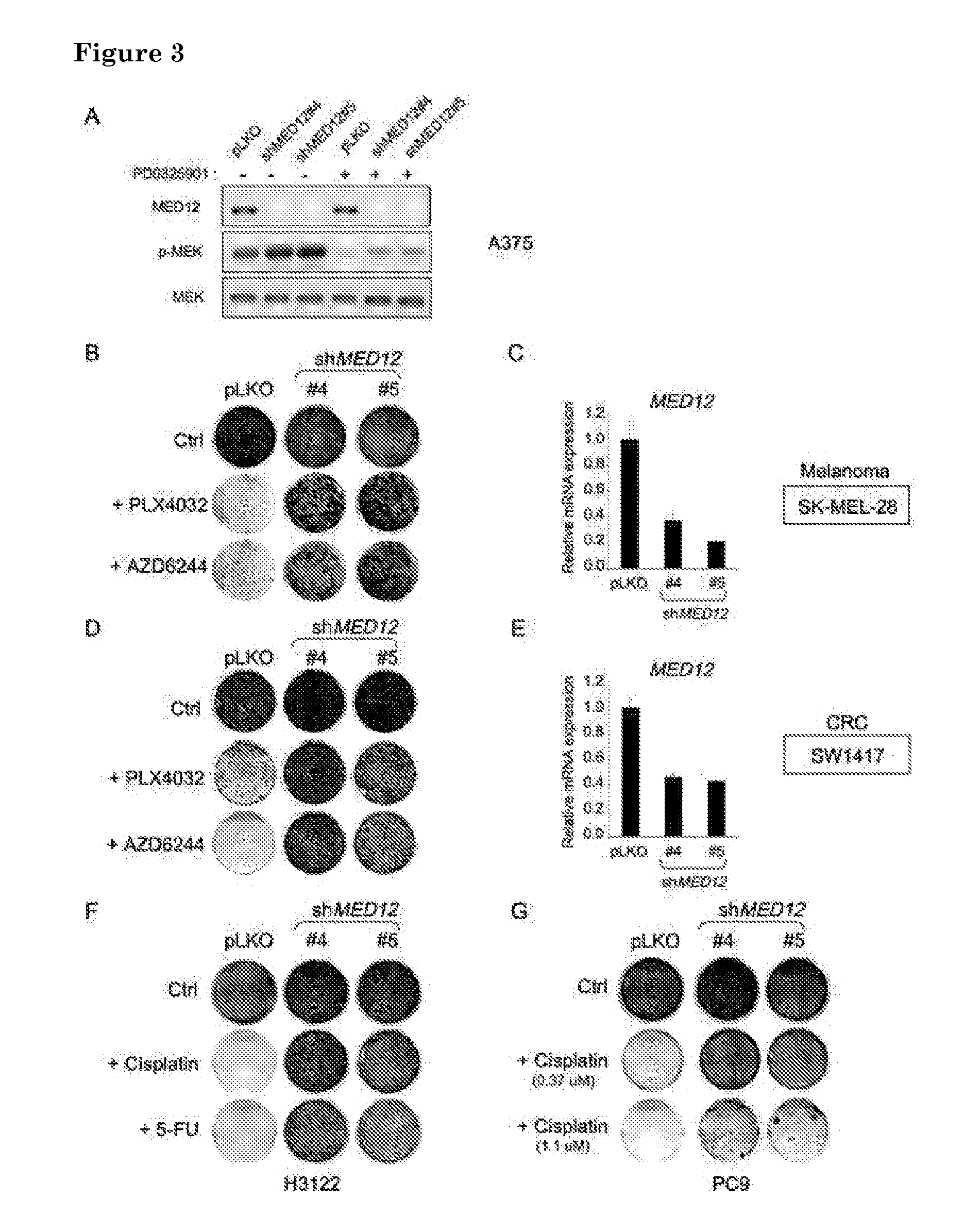Methods and means for predicting resistance to Anti-cancer treatment
a technology of anti-cancer treatment and methods, applied in the field of cancer diagnostics, can solve the problems of lack of overall survival benefit, hampered cancer treatment, and less impressive overall survival benefit of patients, and achieve the effect of suppressing erk activation
- Summary
- Abstract
- Description
- Claims
- Application Information
AI Technical Summary
Benefits of technology
Problems solved by technology
Method used
Image
Examples
example 1
General Materials and Methods
[0141]Crizotinib (S1068), NVP-TAE648 (S1108), gefitinib (S1025), erlotinib (S1023), PLX4032 (S1267), AZD6244 (S1008), PD0325901 (S1036), LY2157299 (S2230) and cisplatin (S1166) were purchased from Selleck Chemicals. 5-FU was obtained from the hospital pharmacy at The Netherlands Cancer Institute. Recombinant hTGFbeta 1 (240-B / CF) was purchased from R&D systems. TRC human genome-wide shRNA collection (TRC-Hs1.0) was purchased from Open Biosystems (Huntsville, USA). Further information is available at www.broad.mit.edu / genome_bio / trc / rnai.html.
[0142]Antibody against MED12 (A300-774A) and MED13 (A301-278A) was from Bethyl Laboratories; antibodies against Vimentin (RV202) and N-cadherin (ab18203) were from Abcam; antibody against p-SMAD2 (Ser465 / 467, #3101), SMAD2 (L16D3, #3103), pMEK1 / 2 (S217 / 221, #9121) and MEK1 / 2 (L38C12, #4694) were from Cell Signaling; anti-Flag M2 (F1804) was from Sigma; antibodies against HSP90 (H-114), p-ERK (E-4), ERK1 (C-16), ERK2 ...
example 2
[0152]The NSCLC cell line H3122 harbors an EML4-ALK translocation and is exquisitely sensitive to the selective ALK inhibitors PF-02341066 (crizotinib) and NVP-TAE684 (McDermott et al., 2008. Cancer Res 68, 3389-3395). To identify genetic determinants of resistance to ALK inhibitors in EML4-ALK translocated NSCLC, we performed a large-scale RNAi-based loss-of-function genetic screen using a collection of 24,000 short hairpin (shRNA) vectors targeting 8,000 human genes (Berns et al., 2004. Nature 428, 431-437; Brummelkamp et al., 2002. Science 296, 550-553). As outlined in FIG. 1A, we used a barcoding technology to identify genes whose suppression causes resistance to crizotinib in H3122 cells (Brummelkamp et al., 2006. Nat Chem Biol 2, 202-206; Holzel et al., 2010. Cell 142, 218-229). The barcode screen results are shown in FIG. 1B. Each dot in the M / A-plot represents one individual shRNA vector. Low-intensity spots are prone to technical artifacts and thus unreliable. Therefore we ...
example 3
[0153]To validate MED12 as a gene whose suppression confers resistance to crizotinib, we individually introduced the two MED12 shRNA vectors (#1 and #2) from the library and one newly generated shRNA (#3) into H3122 cells by retroviral infection. Empty vector (pRS) or shRNA targeting GFP (shGFP) served as controls. All three distinct MED12 knockdown vectors conferred resistance to both crizotinib and NVP-TAE684 in colony formation assays (FIG. 1C) and also efficiently suppressed MED12 mRNA and protein expression (FIG. 1D, E). Similarly, expression of additional independent lentiviral shMED12 vectors (#4 and #5) in H3122 cells also conferred resistance to ALK inhibitors (data not shown). Furthermore, reconstitution of the RNAi-resistant murine Med12 cDNA in MED12 knockdown (MED12KD) H3122 cells restored the sensitivity of these cells to ALK inhibition (data not shown). Reconstituted Med12 protein in MED12KD cells was at a level comparable to that of parental cells (data not shown). S...
PUM
| Property | Measurement | Unit |
|---|---|---|
| Tm | aaaaa | aaaaa |
| temperature | aaaaa | aaaaa |
| temperature | aaaaa | aaaaa |
Abstract
Description
Claims
Application Information
 Login to View More
Login to View More - R&D
- Intellectual Property
- Life Sciences
- Materials
- Tech Scout
- Unparalleled Data Quality
- Higher Quality Content
- 60% Fewer Hallucinations
Browse by: Latest US Patents, China's latest patents, Technical Efficacy Thesaurus, Application Domain, Technology Topic, Popular Technical Reports.
© 2025 PatSnap. All rights reserved.Legal|Privacy policy|Modern Slavery Act Transparency Statement|Sitemap|About US| Contact US: help@patsnap.com



